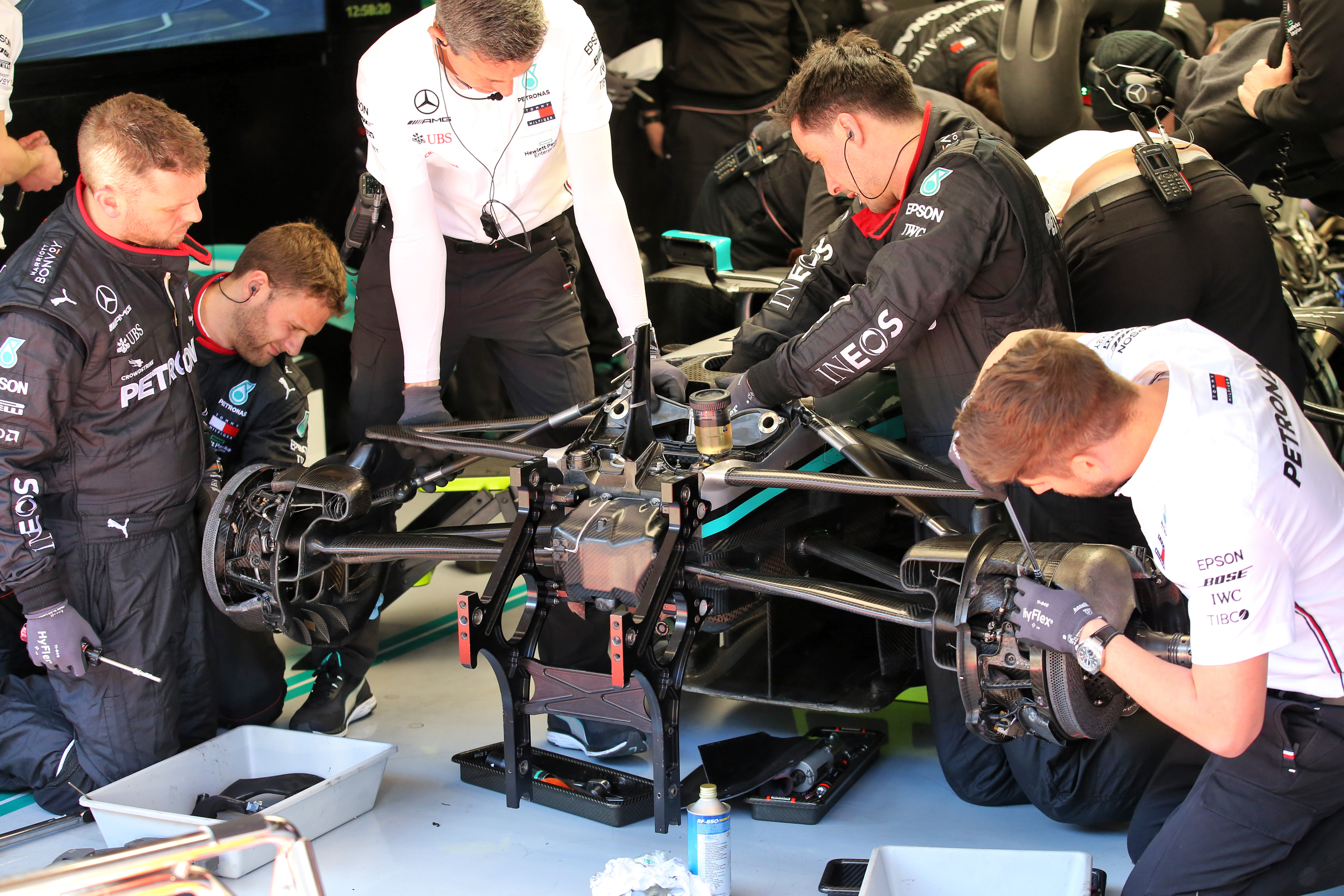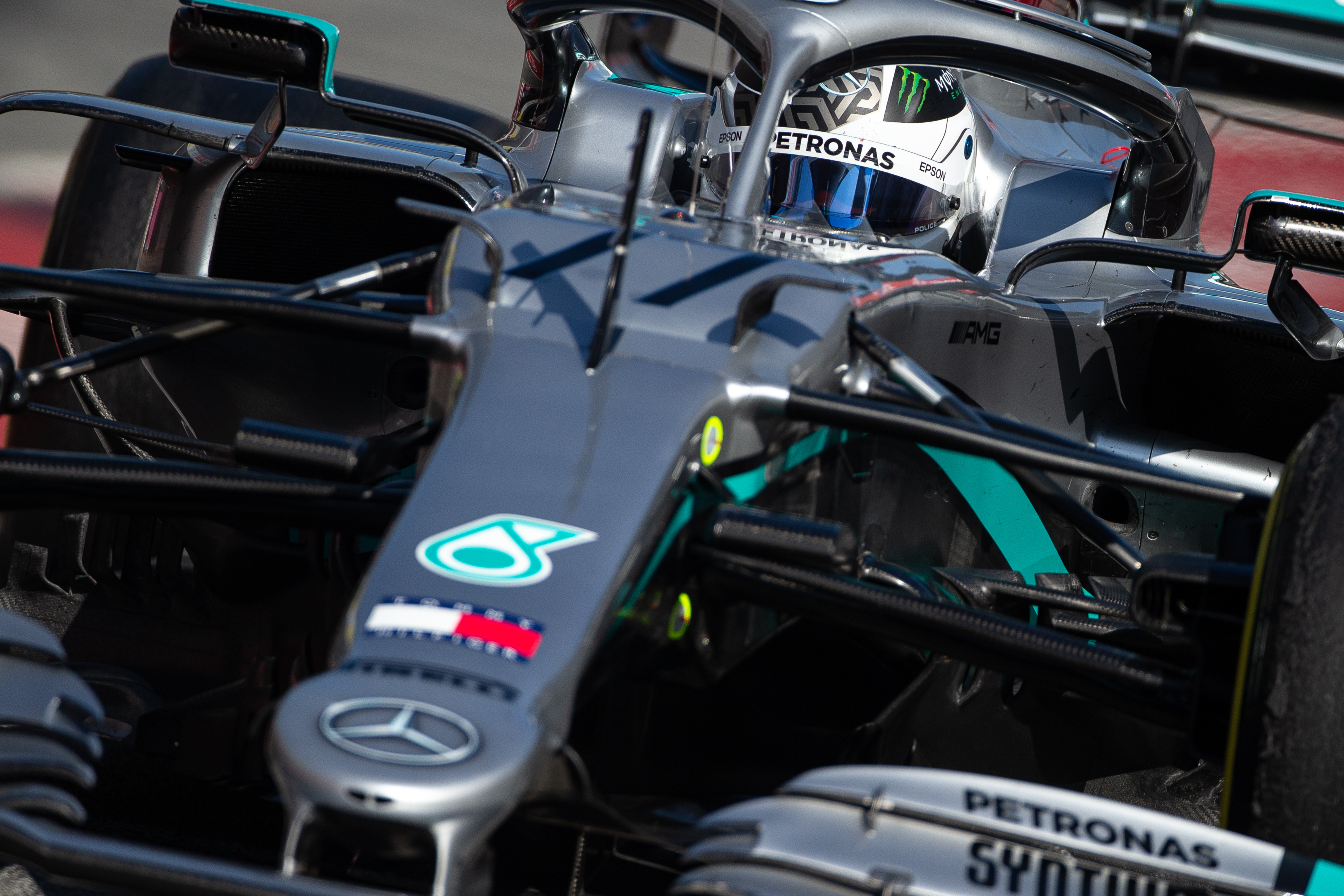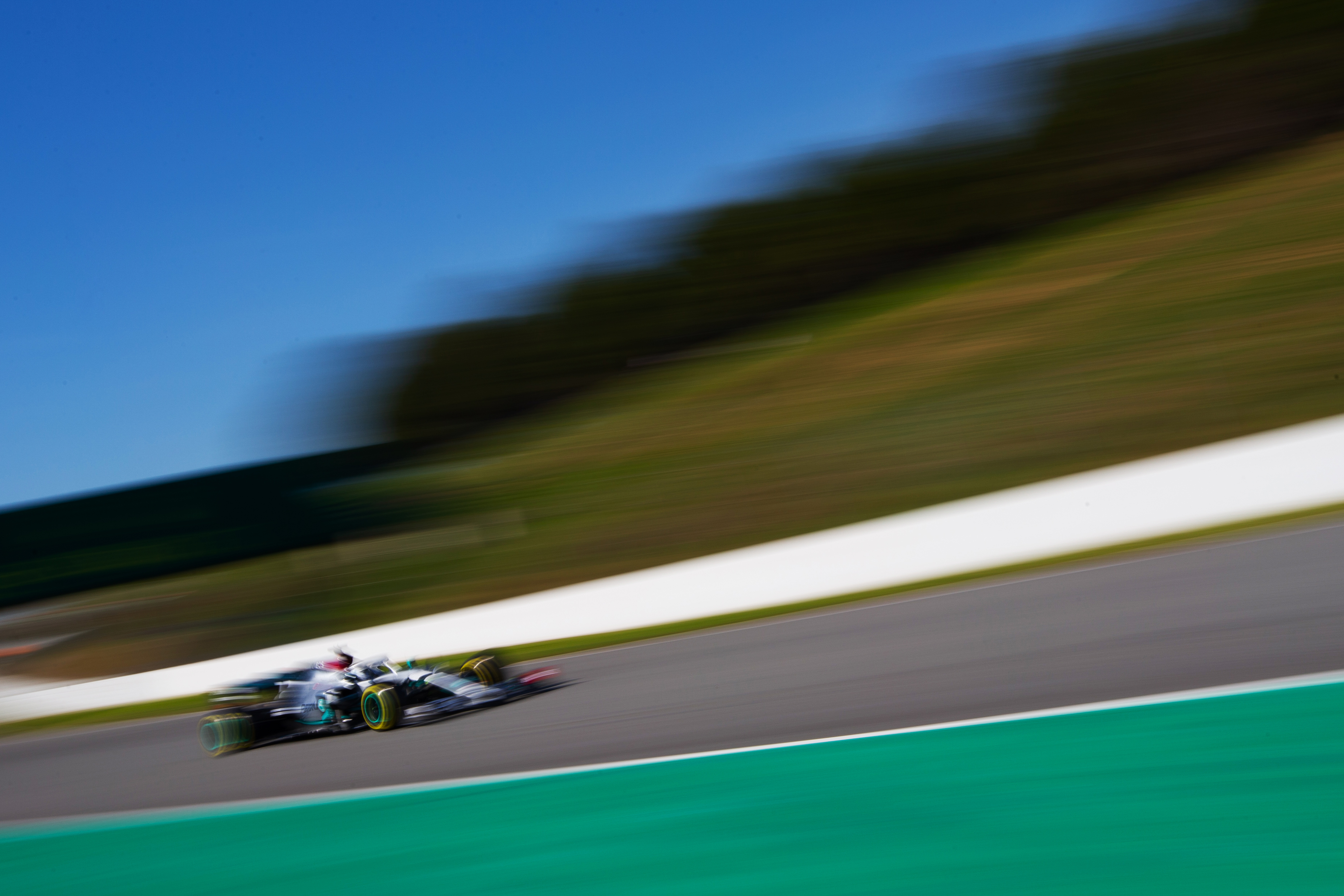Up Next

Mercedes’ dual axis steering system stole the show at Formula 1 testing and its unanswered questions are likely to dominate the narrative leading up to the start of the season.
Rivals were left wide-eyed on day two of this week’s running when onboard footage of Lewis Hamilton showed the six-time world champion pulling the steering wheel back at the start of a straight and then pushing it back into the normal position before entering the next braking zone.
Unsurprisingly it raised several questions. Some we already have initial answers to, but others will linger to the Australian Grand Prix and beyond.

What’s it for?
We have seen, and can assume, some basic fundamentals about the DAS, such as broadly what it does and why, although the team has no interest in disclosing its exact purpose.
As The Race’s F1 technical expert Gary Anderson explains, it seems an interesting solution to a long-standing set-up and tyre wear dilemma surrounding the performance required for the corners compared to the straights.
How Mercedes’ drivers use the DAS impacts the angle of front toe and effectively adjusts the set-up to the ideal state required for that part of the track.
As the driver arrives at the corner they will have toe-out to make the car less nervous on corner entry.
When they reduce that exiting the corner it could help with the speed onto the straights, minimise tyre scrub to further boost straight-line performance, and help cool the shoulder of the tyres fractionally more as well.
That final point is about reducing the stress on the shoulder of the tyre, which can overheat and blister.

Is it legal?
Mercedes technical director James Allison says he had no reason to fear the device’s legality because it has been discussed with the FIA for some time.
The FIA’s technical regulations include certain prescriptions such as not allowing an adjustment to “any suspension system while the car is in motion”, and only mandates the “re-alignment” of two wheels with no reference to how that can be done.
So, if the FIA’s technical department has indicated to Mercedes the DAS is legal, it presumably complies with these rules and is a steering-related device, not suspension-related.
Another reason this distinction is important is that Ferrari and Renault indicated on the final day of testing that how the DAS complies with FIA’s rules about parc ferme conditions remains a point of contention.
Teams must supply a suspension set-up sheet for its cars before qualifying begins, and those details cannot be changed after this point.
According to Mercedes’ rivals, whether the influence the DAS has on the front wheels relates to a steering or suspension set-up change could be the key detail here.
However, by giving Mercedes the green light with this design in principle, the FIA must have indicated it does not consider what the DAS does to be influencing the suspension system.
Therefore the set-up change it inspires would not be relevant to parc ferme conditions.
“Are we discussing with the FIA? Not yet,” says team boss Mattia Binotto. “We will do for clarification, it’s important for us to understand.
“But we will not challenge the FIA on their decision because we trust them fully on what will be, or has been, the decision on that.”

Will it stay legal?
Assuming one of Mercedes’ rivals does not consider the matter closed and challenges it on a grand prix weekend, one would anticipate the FIA’s grand prix weekend stewards upholding the FIA technical department’s initial interpretation of the system’s legality.
That is assuming it is used in the same way that was initially outlined.
Beyond this season, the DAS looks set to be a one-season wonder.
The FIA’s draft 2021 regulations already have an additional paragraph in the technical regulations relating to steering that seems to outlaw such a device.
It mandates that moving the front wheels must be “uniquely defined by a monotonic function of the rotational position of a single steering wheel”.
So the steering wheel can only have one function (steering the wheels) on one axis (by being rotated).
Valtteri Bottas said at the end of the week that he has known about the development of the DAS for almost a year, and as Allison says – this is not news to the FIA.
Those discussions may well be why the 2021 rules have been tweaked so specifically, allowing it as a clever interpretation for 2020 but banning it thereafter.

Is it safe?
Safety is another aspect that has been raised, based on the peculiar nature of the wheel moving on a different axis. Some wondered if it could move unexpectedly and the consequences that could arise from that – a driver losing control exiting a corner, or under braking.
However, it has passed the FIA’s crash test, so this should be ruled out. In theory, it is only a concern if something fails, and that goes for a normal steering system as well.
Sebastian Vettel was one driver to add the view the device might feel “weird” to use, but Bottas’s assessment was emphatic: “It doesn’t feel that strange. It feels solid, it never does anything funny. You only move the wheel if you want to.”
Simply put, there has been no clear objection on safety grounds and every indication is this is not an issue.
“From an FIA perspective, at the end of the day safety is our number one element,” says race director Michael Masi.
“If there are any questions regarding the safety side of it, rest assured that is the highest priority from our side.”
Pirelli F1 boss Mario Isola adds that his team has observed nothing “strange” on Mercedes’ tyres, which from the supplier’s point of view is “important for us to check”.
“The system is not having any negative effect on tyres,” says Isola.
“They don’t predict any negative effect on the tyres. So we can be relaxed.”
What happens next?
For Mercedes, data-crunching to establish the system’s benefit. For its rivals, time and money spent trying to estimate the same – and work out of it is worth copying.
Even if it will be outlawed from next year, those with the resources to pursue a 2020-only copy – Mercedes’ main rivals Red Bull and Ferrari – have begun to explore the possibility of doing so.
“We need to understand how it works and understand what could be the performance benefit,” says Binotto.
“I don’t think at the moment we’ve got any ideas, but we will look into it.”
Bottas’s comments about the timeline of developing the DAS indicate it is a long-term project, although as Mercedes put in the legwork establishing the concept and its initial legality, in theory, it could be much quicker for its rivals to pick the design up.
But whichever route other teams decide to go, Mercedes has scored an early win.
If its competitors do go down the route of developing their own version, they will have to devote more resource to it at a time when teams are already stretched in preparation for a major rules change in 2021.
If Mercedes is left alone in using the DAS, it might establish a small but crucial advantage – and its rivals will have devoted some time and resource anyway in order to make the decision of whether it’s worthwhile to pursue development.
And in either case, Mercedes has scored an early point in pre-season mind games for spooking its rivals.

So what’s it actually worth?
This is probably the answer we will have to wait for the longest to get, and Mercedes spent time this week working to establish the benefit of the DAS.
There is no silver bullet in F1 and Vettel was quite clear when he said he does not expect this to decide the fate of the title.
“It’s much more dependent what you have around it, the car you’re sitting in,” says Vettel. “Maybe I’m underestimating, but I don’t think this is the ticket to win.”
But it is fair to assume it would not be on the car if Mercedes had not identified a potential advantage.
The pursuit of such fine details has always been an intrinsic part of F1, and the creativity to consider such a solution is part of the mentality that makes Mercedes such a potent force.
If the 2020 season is as tight as everyone expects it to be, and this device helps Hamilton or Bottas finish one place higher at only one or two races, it could be worth its weight in end-of-season silverware.




